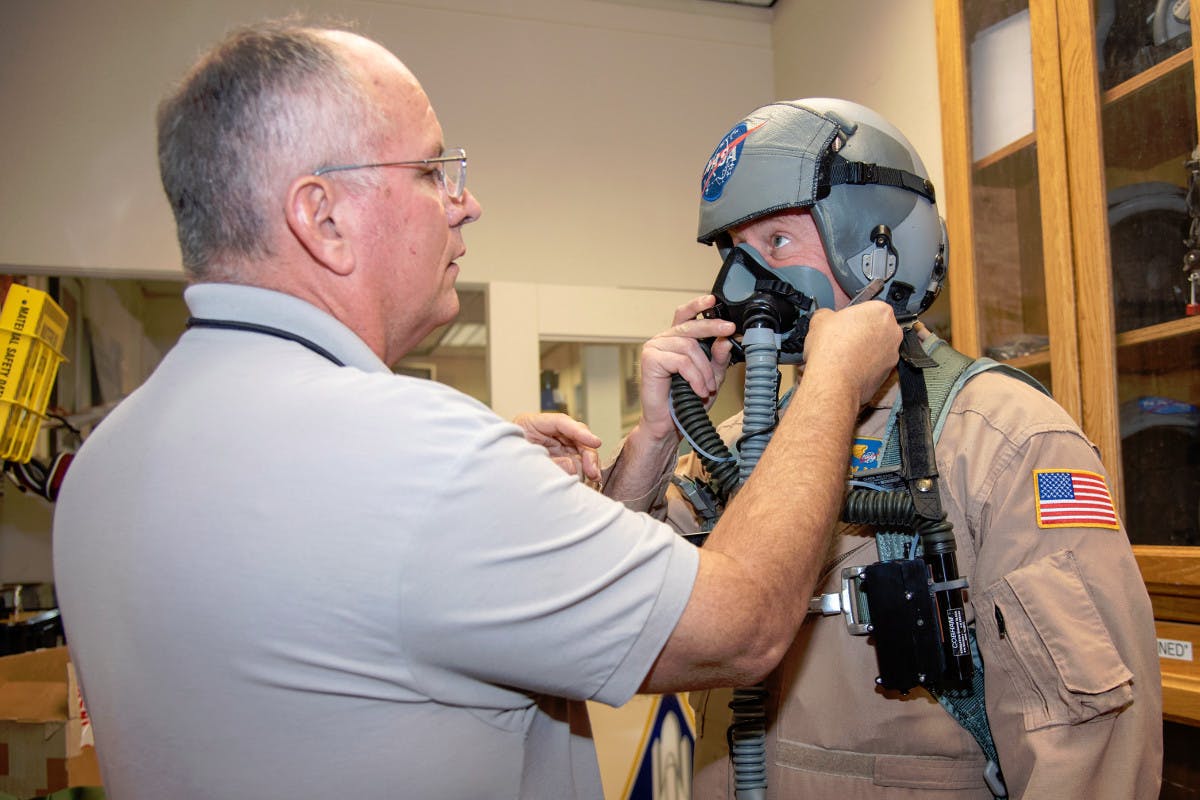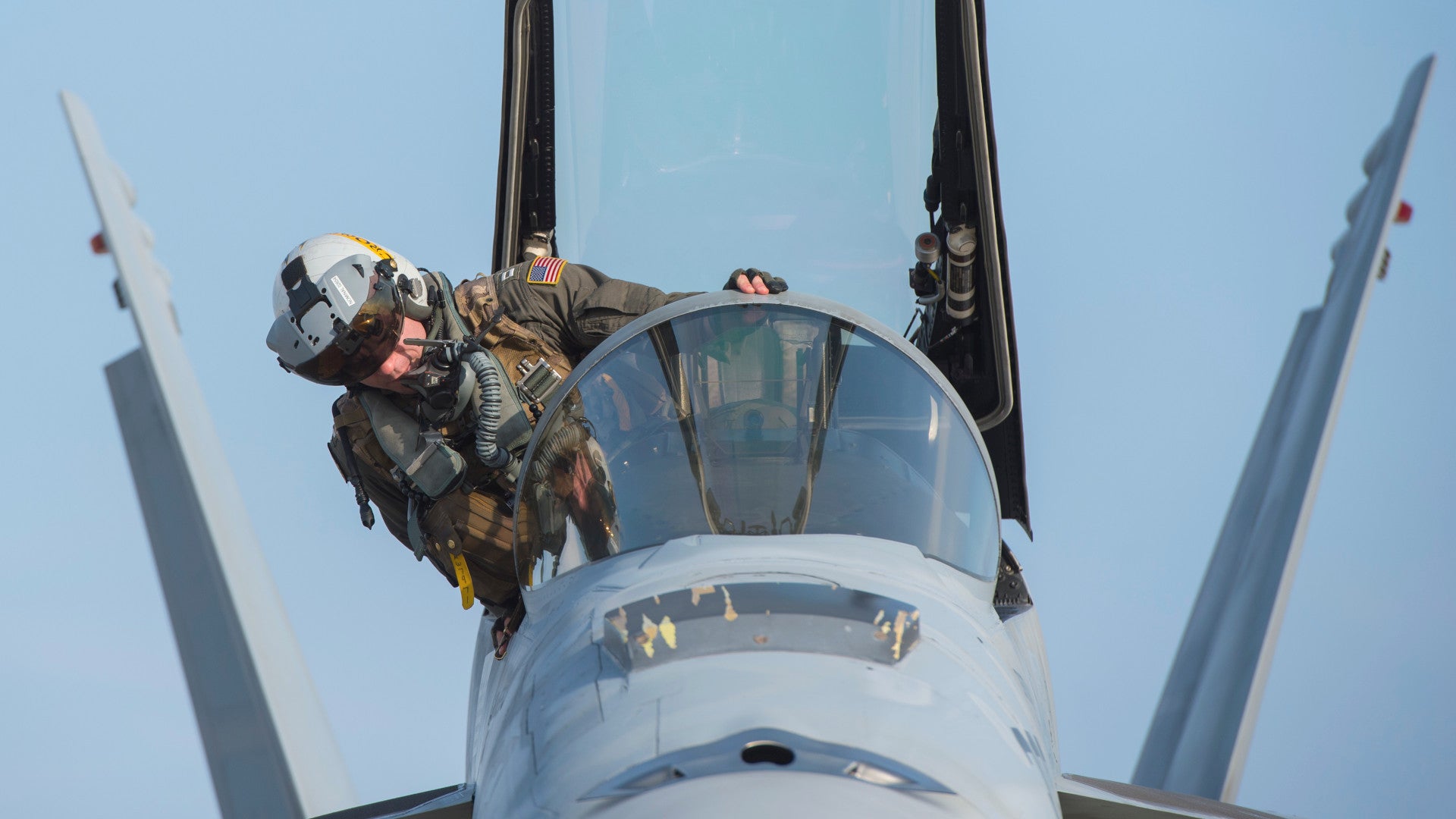The U.S. Navy is looking into buying specialized fabric to make biosensing suits for its pilots and aircrew, which would be able to collect physiological data, such as heart rates and deepness of breath. This comes as the service, as well as the U.S. Air Force and NASA, continue to conduct research into and search for solutions to the causes of hypoxia-like symptoms that have plagued pilots across various aircraft types in recent years. The new clothing could also collect more general data on the health and wellness of aviators to improve their performance, avoid injuries, and more.
Naval Air Systems Command (NAVAIR) released the request for information regarding “physiological monitoring fabrics” for “biosensing garments suitable for Naval aviation” on Dec. 23, 2019. Steve Trimble, Aviation Week‘s Defense editor and good friend of The War Zone, was among the first notice the contracting announcement, highlighting it in a Tweet on Dec. 26.
NAVAIR says it wants fabrics that have good elasticity, being able to stretch significantly without breaking and return to their original shape quickly, while also having “excellent next-to-skin comfort.” They also need to pass ASTM International industrial standards for resistance to heat, helping to ensure that they do not “melt or drip” during a fire. This is a particularly important safety requirement as the U.S. military has found in the past that some synthetic fabrics could melt and stick to skin, causing or exacerbating already serious burns that personnel might suffer during combat or accidents.
Biosensing clothing isn’t new, having been in use in the professional athletic world for years now. Typically these garments use fabrics with interwoven silver fibers or other materials that can sense physiological changes, such as increases and decreases in heat or pressure. They then convey that information to a small, wearable computer that can interpret this information as a faster or slower heart rate or deeper or shallower breathing.
Wireless links then often display the desired information on an individual’s smartphone or other devices via an app. Altogether, this kind of “smart clothing” operates similarly in many respects to other kinds of wearable health and fitness devices, such the Fitbit.

NAVAIR’s contracting notice does not say what its specific requirement is for the biosensing garments, but one immediate use for smart clothing could certainly be to help the Navy gather information to gain more insight into persistent and often unexplained reports of hypoxia-like symptoms among its aviators. The service actually went looking for suits with built-in physiological sensors to help combat hypoxia back in 2009, but it’s not immediately clear how far those efforts progressed.
Air Force pilots have suffered similar issues over the years, as well. The incidents have occurred with individuals flying a number of aircraft types and potential issues with onboard oxygen generation systems, or OBOGS, have typically been cited as a likely root cause. You can read more about these so-called “physiological events” and what the services have been doing to mitigate them in these past War Zone stories.
One of the Navy’s decisions was to, starting in July 2017, begin issuing $450 Garmin Fenix 3 wristwatches to all pilots flying F/A-18C/D Hornets, F/A-18E/F Super Hornets, and EA-18G Growlers. The service has seen some of the most consistent reports of hypoxia-like symptoms from aviators flying these types. Though the Navy primarily purchased the Fenix 3s because they can detect changes in ambient air pressure, as well as provide altitude and course heading information, the watches are also billed as fitness devices and can come equipped with a heart rate monitor and other features.

Smart clothing for naval aviators would be able to gather data to provide a much more comprehensive picture of an aviator’s health before, during, and after any physiological event. Combined with health and flight data from other sensors built into the aircraft, this could help the services get a better sense of what pilots are experiencing and why.
Networked biosensing flight suits could also send data to ground stations in near-real-time, allowing for offboard monitoring, which means commanders might be able to warn their pilots about potential issues. Hypoxia-like symptoms can include disorientation and confusion, which can make it difficult for an individual to necessarily notice what is going on by themselves.
Beyond the hypoxia issue specifically, issuing smart clothing to aviators could simply help build databases of valuable baseline physiological information. Flying fighter jets especially is taxing on the body in many ways that aren’t necessarily well understood. In August 2018, NASA began a program that was primarily aimed at helping to resolve the reported hypoxia issues across the Navy and Air Force. However, the main immediate goal was simply to collect physiological data to help researchers better understand what was normal and abnormal for pilots flying high-performance combat jets.

“We found that there has been very little investigation surrounding the human in the cockpit,” Clinton Cragg, a principal engineer at the NASA Engineering and Safety Center, explained to members of Congress in 2018. “We don’t have the amount of oxygen in his mask, the amount of CO2 [carbon dioxcide] in his mask, the pressure you’d want to know about in the cockpit, nor the pilot’s breathing rates. Those types of things are what could help us do a full physiological assessment of what’s happening to the pilot.”
Databases of physiological information could also simply help maximize the performance of naval aviators inside and out of their aircraft. The data could allow Navy officials to gain insight into how certain demographic groups, as well as specific individuals, perform athletically in various situations under different circumstances.
This, in turn, could help in determine optimal fitness requirements and setting other health-related benchmarks. The collected information could also expose significant trends, such as the occurrence of injuries or other illnesses, and then link them to certain activities or environmental factors. With the help of artificial intelligence-driven algorithms, it might be possible in the future to more quickly spot worrying increases in certain conditions among specific groups, more conclusive determine the root causes, and remedy them.
The rest of the U.S. military has also been taking note of the potential benefits biosensing smart clothing in recent years for the same reasons. Just earlier this year, the U.S. Marine Corps issued their own request for information regarding physiological monitoring garments that would allow them to “tailor conditioning and operational training in order to minimize injuries and optimize strength building and overall operational performance.” The U.S. Air Force and Army have also been exploring this kind of technology.
All told, no matter how much biosensing flight suits do or don’t ultimately help with determining the causes of reported hypoxia-like symptoms among Navy aviators, these garments could still become standard issue in the coming years.
Contact the author: joe@thedrive.com
